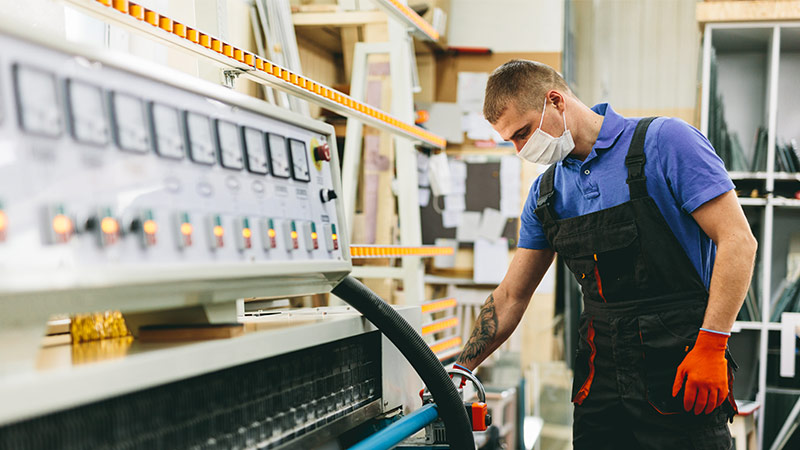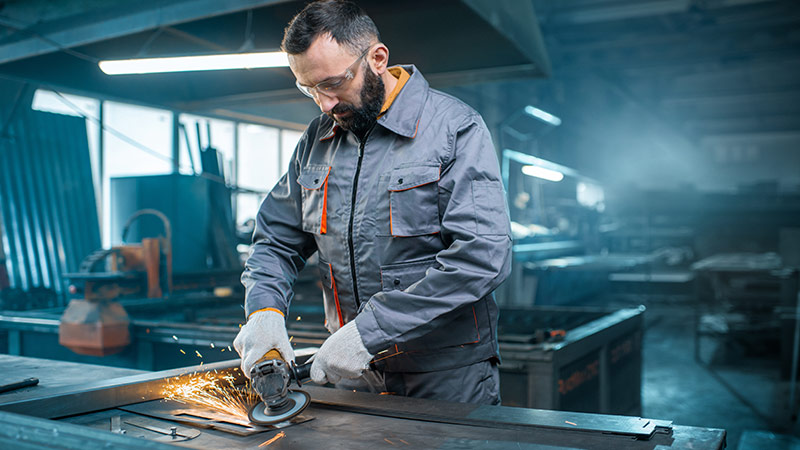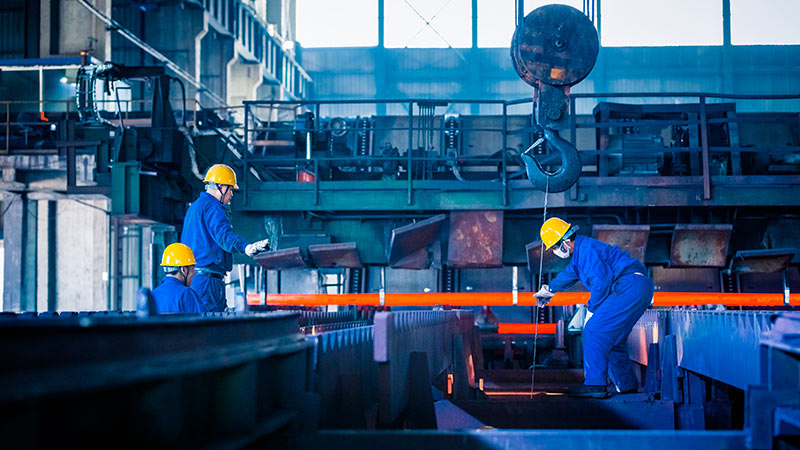Health and Safety
What Does TILE Stand For? Meaning, Implications & Usage
Employees are a company’s most valuable asset. As a result, you cannot overlook their health risks during working hours. As a result, we must pay special attention to inappropriate or dangerous manual handling practices that endanger the workers’ health and safety. The acronym ‘TILE’ appears at this stage. So, what does TILE stand for? It stands for Task, Individual, Load, and Environment.
We use it in the workplace to assist employers and managers with risk evaluation for manual handling. It covers the four significant aspects of manual handling, i.e. Task, Individual, Load, and Environment, and you should carefully address it before doing any manual handling duties or procedures at work.
We’ll go over the ins and outs of this risk assessment term in part below. It will help us recall the various areas that we need to address before assessing whether a task is safe for our workforce to perform or not.
Let’s begin.
Table of Content
Manual Handling Risk Assessment
Before we answer your question, “what does TILE stand for?” we first have to discuss “manual handling risk assessment.”
So, what is it?
A manual handling risk assessment is carried out to identify potentially hazardous manual handling processes and to design measures to counter or control manual handling in order to avoid accidents.
Therefore, it refers to any physical task that entails moving or supporting a burden with your body or hands. This includes:
1. Raising
2. Pushing
3. Lowering
4. Carrying
5. Dragging
6. Shifting a burden.
A ‘load’ in manual handling can relate to the management of a person, an animal, or an entity.
For example:
- Patients and residents in hospitals and care homes may need to be transferred from time to time.
- Professions in the veterinary and farming industries may involve animal handling.
So, the key points on which this manual handling risk assessment is applied:
1. Whenever possible, avoid dangerous manual handling.
2. If hazardous manual handling is required, a risk assessment must be completed.
3. Before work is completed, as far as feasible, reduce the risk of injury from manual handling.
You may be wondering why this is such an important talking point. It’s because manual handling can cause injuries- from light to severe. So what are they? Let’s give you some examples.
Do you know what is the process and steps in manual handling?
Injuries Caused by the Manual Handling Tasks
- Most common are back injuries or pain.
- Injuries to the hands.
- Bruising or cuts.
- Musculoskeletal disorders. For example upper limb or neck diseases, lower limb disorders, and damage to joints or other tissue.
- Ligament damage.
- Muscles that have been strained or injured.
- Discs that have prolapsed.
- Hernias.
- Limbs that have been crushed.
- Bones that have been fractured or broken.
- Occupational overuse syndrome (OOS) in the workplace.
Legislation Governing Manual Handling
MHOR or The Manual Handling Operations Regulations (1992) are a piece of health and safety regulation that applies to owners, supervisors, and health and safety representatives. It was intended to help eliminate or lessen the dangers connected with manual handling activities. It also protects personnel who perform manual handling tasks from injury.
Employers under the MHOR are required to:
- Manage the health and safety of the workforce who do manual handling tasks.
- They must also take reasonable precautions to ensure their own and others’ health and safety.
- When executing a risk assessment, the employer or management should consider whether the employee possesses the necessary knowledge and training to do manual handling activities.
- They must also maintain track of any notifiable occurrences that occur as a result of manual handling activities under the MHOR.
We also have to remember that the manual handling obligations are not entirely the duty of the employer. Employees must also adhere to the terms and circumstances of the risk assessment. These are:
- Observe all health and safety regulations and safe work systems.
- Implement the use of any safety equipment that is necessary.
- Utilise equipment in a safe and appropriate manner.
- Notify your employer if you notice any unsafe or risky manual handling practices.
- Report to your employer if any flaws in the equipment, systems, or processes are noticed.
- Immediately inform your employer if you have a disease, an injury, or other characteristics that could make any manual handling task dangerous.
- Notify your employer if any risk assessments are no longer credible.
- Always discuss any health and safety issues with your employer.
- Ascertain that these issues do not endanger others.
Now, we’re going to discuss:
1. What does the acronym TILE stand for?
2. What does TILE stand for in manual handling?

Manual Handling Training Course Online
- Accredited Courses
- Tutor Support Included
- 3 Installment Plan at checkout
- 14 Days Money Back Guarantee
TILE Manual Handling Detail Explained
TILE assists you in doing a manual handling risk assessment and eliminating or significantly reducing any probable hazardous situations that may affect the health and safety of everyone working in a manual handling activity in the workplace. Let’s look at “what does TILE stand for?”
| T | Task | |
| I | Individual | |
| L | Load | |
| E | Environment |
T = Task
You must evaluate the nature of the approaching manual handling task, including:
- What it entails
- How dangerous it is
- How it may impact the health and safety of individuals performing the task
- Anybody else who may be affected.
You’ll need to determine the type of activity and movement involved, as well as the amount of it. Consider the following questions.
1. Is it required to conduct a lot of:
- Pressing
- Tugging
- Pulling
- lowering
- Twisting
- Stooping
- Bending
- Pushing
2. Are there any excessive, sudden, or repetitive movements?
3. Is putting in a lot of physical effort required?
Furthermore, you’ll also need to consider if the manual handling job entails any of the following:
- The load’s placement.
- Unexpected motion.
- A lack of enough rest.
- Managing the work as a team.
- Working in a chair for a long time.
If your answer is yes, then the risk variables should be reduced as much as feasible, or the work should be reassessed.
There are a variety of options for finishing the work. Alternative methods of completing the task can help to lessen the danger of damage.
You should also think about if you have time to relax. There might be a better way to:
- Convey the load
- More personnel available to share the effort
- More time to finish it with proper pauses in between loads.
Although there are no specified weight restrictions for manual handling, the maximum safe lifting weight for women is 16 kilograms and for males is 25 kilograms.
However, these limits vary according to the size of the object and where and how it is being transported. Therefore, the employer’s responsibility is to ensure that their employees know them and do not exceed them.
If you ever dream of becoming a safeguarding officer, check out our other blog, “How to Become a Safeguarding Officer?”
I = Individual
This entails evaluating the person who will be performing the manual handling task. The factors that may play a part in the risk level of a manual handling activity are all crucial to be aware of. These include:
- The diverse skills
- Degrees of training
- Physical strengths
- Ages
- Heights
- Health issues
All of these elements are significant in determining whether there are any hazards to the individual’s health and safety, as well as the health and safety of others.
You may also need to examine:
- If they have a disability, accident, or health condition, they could be in danger.
- Whether the person is a new or pregnant mother.
- If they have the necessary expertise and training to complete the activity.
The following major criteria are also of critical importance:
- Is the object sharp, heavy, and difficult to hold?
- Is the content that is either hot or cold likely to move?
- Is there a minimum degree of strength required for this task?
- Is there a minimum height requirement for this job?
If a risk assessment suggests that a specific individual performing a manual handling activity is under a high level of risk, the task may be delegated to someone else.
Furthermore, because people’s abilities change over time, it’s possible that you’ll need to reassess their ability to execute manual handling tasks on a regular basis.
Top Courses of this Category
L = Load
It is critical to understand what is being carried or relocated in order to do the operation safely. The cargo should be thoroughly investigated, which includes examining its contents to see:
- If they are hazardous or cumbersome
- Its physical containers
- If they have carrying handles and a weight indicator.
Examine the load’s securement and distribution of weight. Determine whether the materials are likely to move during handling and, if so, what the consequences would be.
Consider the following factors when determining how dangerous a load is:
- What is the weight of the load?
- Is the load a potentially dangerous item?
- Are there any sharp edges on the load?
- Is the load going to be unstable when it’s being moved?
- Is it more difficult to keep hold of the burden because of its shape?
- Is the load at a high or low temperature?
- Is it possible that the load will spill or come apart when it is handled?
- Is it possible to look around while carrying the load?
If your answer to any or some combinations of the above questions remains yes, then you may need to take extra precautions to verify that a container is safe before you move it.
A huge load could be made smaller and easier to carry in some instances. For example, the equipment could be employed to help with the managing of particularly large or heavy weights. If the load contains a hazardous substance, personal protective equipment (PPE) may be necessary.
E = Environment
Manually moving a load through an industry, workplace, or factory may require alterations to flooring, accessing stairs, and corridors. Thus, it may be necessary to conduct a risk evaluation of the total environment. This requires examining how elements like flooring, lighting, airflow, and humidity affect the task.
To navigate the area securely, you must prepare the entire route, from potential trip hazards to access to light or shutter switches.
Consider the following factors when deciding where you’ll perform a manual handling task:
- How level and stable is the surface?
- Is there any potential tripping or slipping dangers?
- Is there a path with any steps or ramps?
- Will the temperature of the environment fluctuate during the task?
- Is it possible for the temperature of the environment to have an impact on an object’s grip?
- If the load is harmful, is there adequate ventilation?
- Is there any potentially hazardous weather that could hinder the task?
- Is there sufficient light available when needed?
Suppose you detect any concerns are detected when assessing the risk factors connected with the environment. In that case, you may need to adjust or update the environment before the manual handling activity begins.
You can, for example, modify the location of the task or the location where the load is kept.
Alternatives to lowering or eliminating environmental risks include removing potential dangers before the job begins. You could also establish a route ahead of time.
What is the Significance of TILE?
Before starting a manual handling activity, conduct a TILE risk assessment to eliminate any potential hazards. This will ensure that health and safety issues do not hinder the task after it has begun.
Manual handling operations that go wrong are the leading source of non-fatal workplace injuries in the United Kingdom, accounting for 21% of all non-fatal injuries. It is estimated that 300,000 workers suffer from back pain each year as a result of incidents involving manual handling.
Manual handling is also the leading cause of musculoskeletal disorders among workers. TILE can assist lessen the dangers connected with manual handling, lowering both of these numbers and ensuring that manual handling operations are completed safely at all times.
Manual handling accidents cause not only a large number of employee injuries and illnesses but also lead to a loss of efficiency and business hours each year. Ensuring the health and safety of employees can help firms and employees save money by lowering the expenses of lost labour and reducing financial losses.
At this stage, you can visit our other blog, “How Many Steps are There to a Risk Assessment?” to better learn about risk assessment, its importance and the steps to a risk assessment.
What Do TILEO and LITE Stand For?
After reading the entire text, I believe you have a comprehensive understanding of TILE – a risk assessment technique. You may also have heard of the terms TILEO and LITE by now. Don’t be concerned. I am going to explain these two too.
TILEO
TILEO is the next step in the TILE process. The ‘O’ in TILEO stands for ‘Other Factors’. It’s a means to ensure that any aspects that aren’t covered by task, individual, load, or environment aren’t overlooked during a TILE risk assessment.
‘Other Factors’ relates to anything else that could impact the health and safety of a manual handling operation. Such as:
- The necessity for lifting equipment,
- Or, personal protective equipment (PPE).
Here are the necessary variables to consider:
- Do you require personal protective equipment (PPE)?
- Is it possible that your gear or personal protective equipment (PPE) is impeding your movement?
- Are you wearing the proper PPE?
- Are there any mechanical aids in use?
- If so, are they in good functioning order and suitable for the task?
LITE
LITE is an abbreviation that stands for the same thing as TILE, but with the letters reversed. When referring to the manual handling practice, both LITE and TILE are valid terms.
Conclusion
In essence, TILE in an organization is a truly beneficial decision from the standpoint of the employer. This humane application will provide a secure haven for your employees and propel your company to new heights. So, you should always consider making your employees, as well as yourself, aware of “what does TILE stand for?” and its implications.
FAQs
What are the 4 key areas of manual handling TILE?
When conducting a manual handling risk assessment, employees should consider the following four factors:
1. The nature of the task
2. The capabilities of the person executing it
3. The type of load
4. The environment in which manual handling takes place
What is moving and handling in care?
In the care sector, moving and handling refer to every time you assist a person in your care to relocate. This includes, but is not limited to, assisting someone in getting into and out of bed, bathing, showering, and bed baths etc.
What does RIDDOR stand for?
RIDDOR stands for Reporting of Injuries, Diseases and Dangerous Occurrences Regulations 2013.
What does NIOSH stand for?
NIOSH stands for National Institute for Occupational Safety and Health.
Is DSE a legal requirement?
The Health and Safety Regulations of 1992 made DSE assessment a legal necessity.
What weight can a man lift with arms outstretched at shoulder height?
Guidelines say that the maximum weight that males should lift at work when carrying loads near to the body at roughly waist height is 25kg. For weight that we hold at arm’s length and/or above shoulder height, it should be at or below 5kg.
What to Read Next:
- 8 Examples of Illegal Moving and Handling Techniques in Health and Social Care
- What are the 6 Key Principles of Safeguarding
- How Many Common Types of Asbestos Are There










